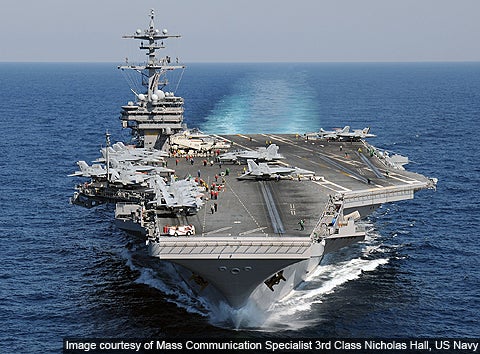The US Navy has started testing the Rapid Prototype torpedo warning system (TWS) and countermeasure anti-torpedo (CAT) system onboard the final Nimitz-class supercarrier, USS George HW Bush (CVN 77).
Following its installation as a part of the ship’s planned incremental availability (PIA) period, the system is being tested by the Naval Sea Systems Command (NAVSEA) PMS 415’s Surface Ship Torpedo Defense (SSTD) team.
During the trials, the system floated in the water to gather acoustic data, which will be used to enhance the software and enable the alert system to be more reliable when deployed in future.
Commenting on the testing, TWS/CAT fleet liaison Brad Robinson said: "We are collecting noise and acoustics that we were unable to previously."
Led by PMS 415 programme manager captain Moises DelToro, the SSTD team is working on the system to make it ready for operational use on CVN 77 during deployment.
CVN 77 operations officer commander Andrew Walton added: "While the NAVSEA team is embarked, they’ll be able to make adjustments for future operation based on the lessons learned."
In 2011, chief of naval operations (CNO) admiral Jonathan Greenert approved the TWS/CAT system for use onboard aircraft carriers, which was previously tested only on smaller ships such as destroyers.
The TWS/CAT is scheduled to undergo testing over the next few months aboard CVN 77, providing an opportunity for sailors to familiarise themselves with the system.
The aircraft carrier is currently carrying out training qualifications.
Image: USS George HW Bush aircraft carrier underway in the Atlantic Ocean. Photo: courtesy of mass communication specialist 3rd class Nicholas Hall, US Navy.






